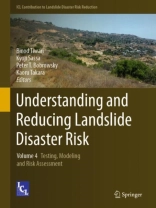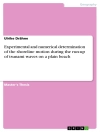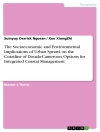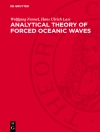This book is a part of ICL new book series “ICL Contribution to Landslide Disaster Risk Reduction” founded in 2019. Peer-reviewed papers submitted to the Fifth World Landslide Forum were published in six volumes of this book series. This book contains the followings:
• Five keynote lectures
• Recent development in physical modeling of landslides
• Recent development in numerical modeling of landslides
• Recent development in soil and rock testing techniques, application and analysis methods
• Recent advancements in the methods of slope stability and deformation analyses
• Recent development in disaster risk assessment
Prof. Binod Tiwari is a Vice President of the International Consortium on Landslides (ICL). He is the Associate Vice President for research and sponsored project and Professor of civil and environmental engineering at the California State University, Fullerton, California, USA.
Prof. Kyoji Sassa is the Founding President andthe Secretary-General of the International Consortium on Landslides (ICL). He has been the Editor-in-Chief of International Journal Landslides since its foundation in 2004.
Prof. Peter Bobrowsky is the President of the International Consortium on Landslides. He is a Senior Scientist of Geological Survey of Canada, Ottawa, Canada.
Prof. Kaoru Takara is the Executive Director of the International Consortium on Landslides. He is a Professor and Dean of Graduate School of Advanced Integrated Studies (GSAIS) in Human Survivability (Shishu-Kan), Kyoto University.
Tabela de Conteúdo
Keynote Lectures, Recent development in evaluation and application of residual and fully softened shear strength for stability analysis of landslides.- Oso Landslide: Failure Mechanism and Runout Analyses Numerical Modelling for Slope Stabilizations in Modern Geotechnical Practice.- Recent Advances in the Methods of Slope Stability and Deformation Analyses.- Engineering Risk Mitigation for Landslide Hazard Chains: the Baige Landslides on the Jinsha River in 2018.- Recent Development in Physical Modeling of Landslides, Application of magnetic tracking system in laboratory-scale rock avalanche model tests.- A simple physically-based distributed translational landslide model.- Behaviour of Slope Instability using Physical and Computational Modelling.- Centrifuge Modelling of Slope Failure due to Groundwater during Excavation.- Effects of Relative Density in Progressive Sliding of Tailing.- Experimental Studies on the Effect of Vegetation Density to Change Underground Seepage Rate and Stability of Slopes.- Laboratory simulations of submarine landslide failure mechanisms.- Laboratory tests to simulate the rainfall infiltration process of pyroclastic soils subject to instability.- Recent Development in Numerical Modeling of Landslides, 3D analysis of a fragmental rockfall.- 3D landslide models in VR.- A coupled discrete element and depth-averaged model for flow-like landslide simulations.- Advanced methods for simulating complex landslides.- Application of Reciprocal Green’s Functions on the Forecast of Submarine Landslide Tsunamis.- Deformation characteristics with porewater pressure development of shallow landslide triggered by rainfall infiltration.- Debris flow simulations due to landslide dam outburst and considering effective countermeasures.- First test results from the SMART-SED simulation tool basin scale sediment yield model.- Hazard assessment of a rainfall-induced deep-seated landslide in Hakha city, Myanmar.- Landslide hazard zoning basedon the integrated simulation model (LS-Rapid).- Numerical models of debris flows with entrainment analysis-case studies from the Republic of Serbia.- Numerical simulation of a creeping landslide case in Japan.- Numerical simulation of debris flows after ash fall at Mt. Fuji.- On the progression of slope failures using inverse velocity of surface movements in an undercut slope model.- Rainfall boundary condition in a multiphase Material Point Method.- Response of slopes to earthquakes and rainfall.- Reproduction of Sedimentation State during Rock Slope Failure Using the Simplified DEM Model.- Recent Development in soil and rock testing techniques, application and analysis methods, Analysis of shear strength variability of ash-fall pyroclastic soils involved in flow-like landslides.- Comparison of Soil Parameters and Soil Moduli E50 & E70 of Residual Soils used in Stability Analysis.- Influence of plant root asperities and architectural traits on soil shear resistance.- Modelling of Creep Behavior of Claystone in Mae Moh Open-Pit Mine Using the Soft Soil Creep Model.- Monotonic and Cyclic behaviour of tephra layer landslide at Takanodai from the 2016 Kumamoto earthquake.- Shearing rate effect on residual strength of typical clay soils in ring shear test.- Simple shear tests for unsaturated soils.- Simplest Methods of Determining Dynamic Soil Properties for Use in Co-seismic Hazard Analysis.- The acoustic emission characteristics and shear behaviour during granular shearing.- Recent advancements in the methods of slope stability and deformation analyses, Prediction of deformation of caisson type piles in open cut works and countermeasures employing early closure method.- Slope Stability Assessment of Weak and Weathered Rocks with BQ System.- Soil databases to assist slope stability assessments in the Eastern Caribbean.- The Mt Gamalama instability level in generating landslide-induced tsunami in Ternate Island, Indonesia.- Recent Development in Disaster Risk Assessment, Effect of Pore Pressure Dynamics on Progressive Failure in a Clayey Glaciolacustrine Landslide.- Engineering Geological Investigation and Slope Stability Analysis for Landslide Hazard Assessment in Indian Himalayas.- First considerations about post 2017 wildfire erosion response and debris flows in Susa valley (NW Italy).- Identification of Sliding Surface and Crack Pattern in the Soil Creep, Case Study: Unika Soegijapranata Campus, Semarang, Central Java, Indonesia.- Preliminary result of real-time landslide monitoring in the case of the hinterland of Koroška Bela, NW Slovenia.- Quantitative risk analysis of earthquake-induced landslides.- Role of Remote Sensing Technology in Landslide Risk Management of Hong Kong.- The characteristics of the vegetation distribution related to the slope failure caused by the earthquake.- Cutting-edge technologies aiming for better outcomes of landslide disaster mitigation.












